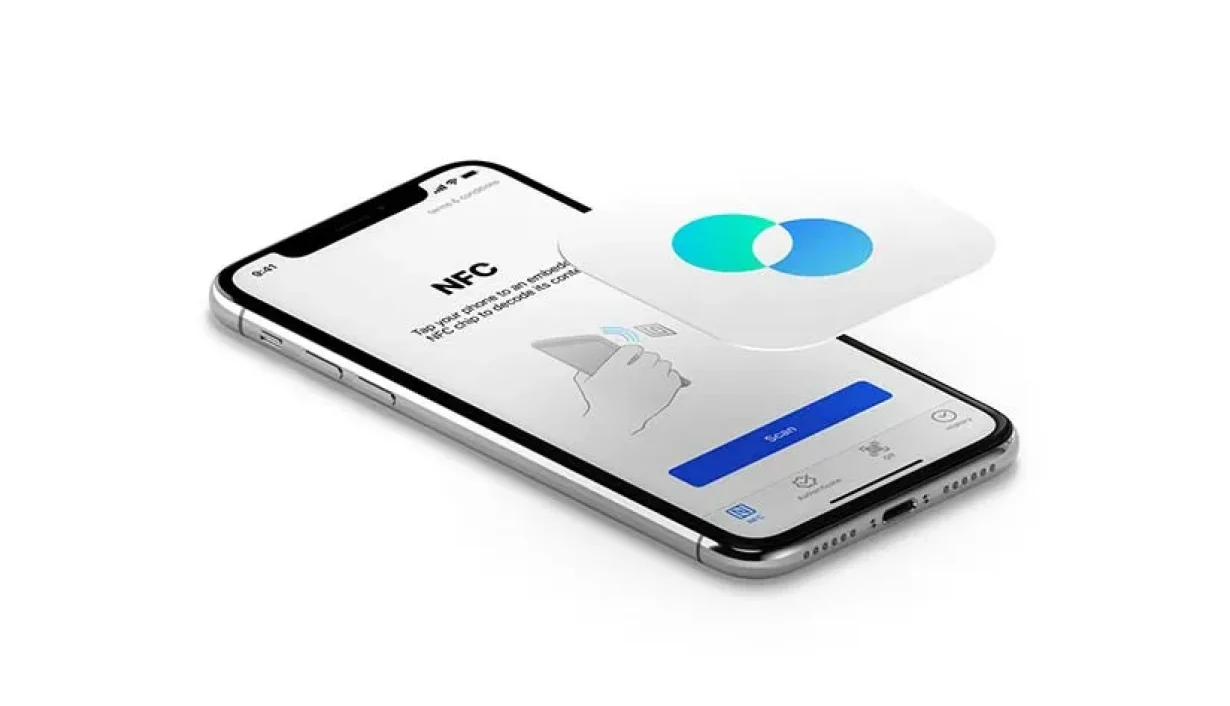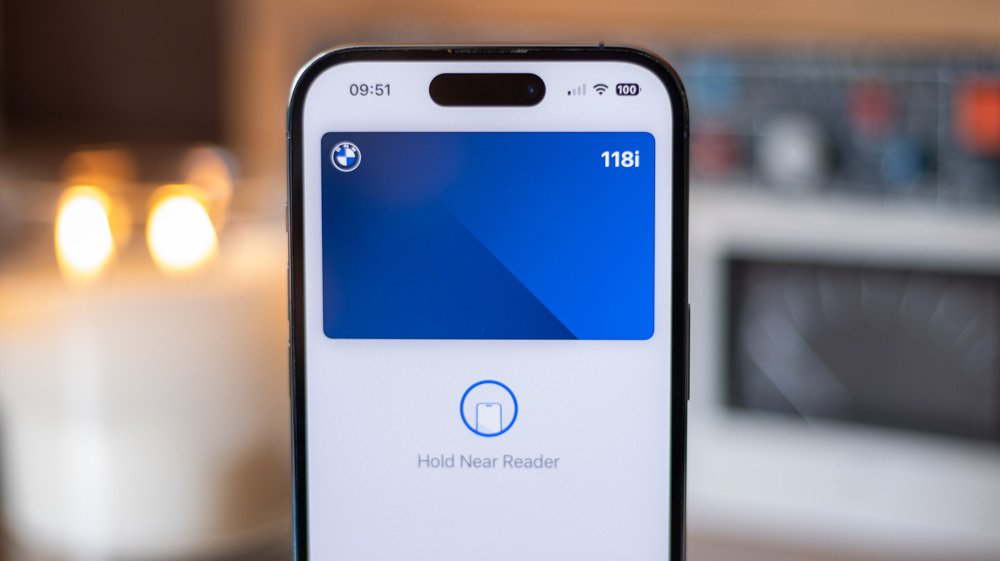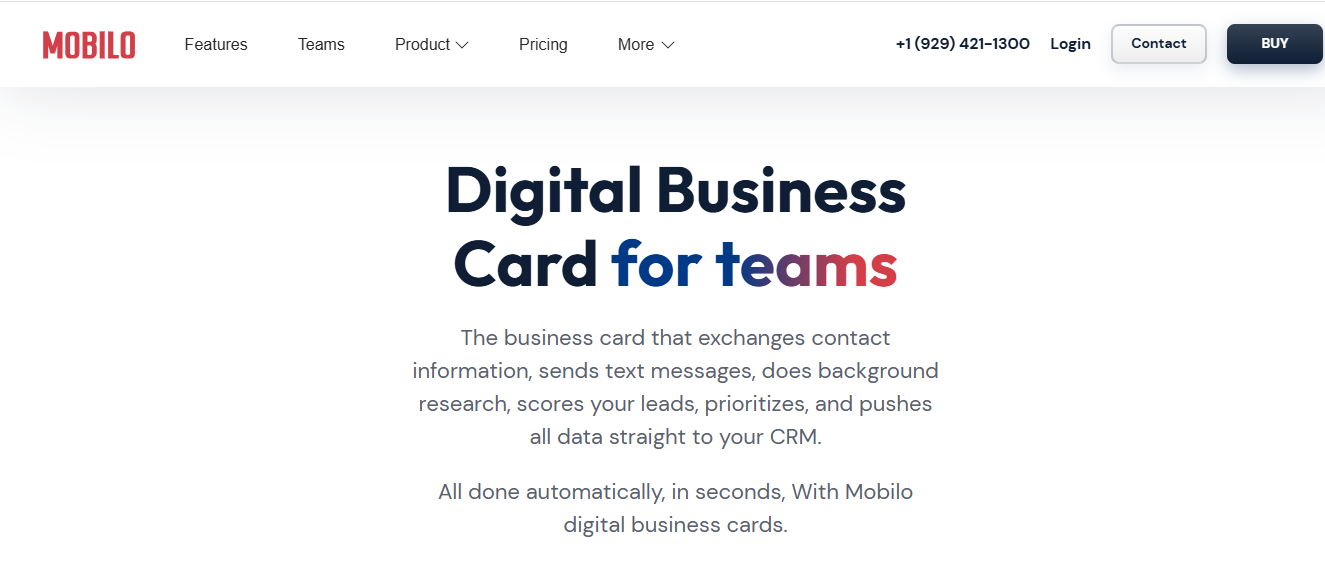.svg)

Imagine walking into your kitchen and tapping your phone on a sticker to start your morning playlist, turn on the lights, and open the coffee app. NFC tags let your iPhone perform small tasks with a single touch, turning repetitive steps into a single easy action. This guide on 'How to Use NFC tags with iPhone' explains how to program stickers, link them to Shortcuts and apps, and use contactless triggers to automate daily routines, saving you time and reducing friction. Ready to make your phone work smarter?
To help you get there, Mobilo's Digital Business Card utilizes NFC tags to share contacts and launch actions with a single tap, allowing you to speed up connections, automate simple tasks, and maintain a smooth workflow.

You need a compatible iPhone, up-to-date iOS, and the proper physical tags before you start; with those in place, you can read, write, and trigger automations from tags using the built-in Shortcuts app or select third-party tools. Ensure your device supports NFC writing and that you purchase NDEF-compatible tags with sufficient memory to store the data or actions you want to record.
An NFC tag is a small device containing an NFC chip, which can communicate wirelessly with devices that support NFC. NFC tags are available in various forms, including:
They store NDEF records such as URLs, vCards, or small payloads that trigger phone actions. Because the iPhone has a built-in NFC radio, it can interact with these tags directly for reading and, on supported models and OS versions, writing.
Yes, modern iPhones can both read and, in many cases, write or simulate NFC functions, though Apple places constraints for privacy and security reasons. Apple has gradually relaxed capabilities in recent iOS releases, but restrictions remain in place regarding what third-party apps can emulate or expose.
Open Shortcuts and create a new automation, choosing NFC as the trigger. Tap to scan the physical tag or assign a label to a virtual tag, then attach the action you want, such as opening a URL, launching an app, or sending a templated message. Test by tapping the top of the iPhone to the tag and confirm the action runs reliably.
For many enterprise uses, you will write a simple URL that redirects to a centralized lead-capture endpoint, thereby triggering a CRM event.
Tools like NFC Tools provide richer write and emulation features, and some can construct more complex NDEF records than Shortcuts. That additional flexibility comes at a tradeoff: more permissions, more moving parts, and greater surface area for privacy concerns.
In practice, we found that when we ran a two-week pilot with a sales team, confusion about tag placement and concerns about app permissions slowed adoption. As a result, teams often chose Shortcuts first to minimize friction and privacy risk.
Device support varies by model and OS, so confirm each team member’s phone before mass deployment. Avoid storing passwords, payment data, or personally identifiable information directly on tags; treat tags as triggers that point to secure, authenticated workflows.
Physically, do not use metal-backed tags unless they are explicitly labeled as on-metal; metal will block the NFC field, making reads unreliable. Buy tags from reputable vendors, test a sample batch for read distance and write reliability, and pick a memory size that leaves headroom for future needs.
You can use an iPhone to emulate a badge for simplified access control, pair it to smart home or meeting-room setups, or share contact and lead information at events. For teams aiming to transform networking into a measurable pipeline, a best practice is to configure tags to redirect to a canonical, admin-controlled URL that resolves to the organization’s lead intake flow, ensuring consistent tracking and permissioned data capture.
The familiar approach most teams take is handing out paper cards or relying on manual notes at events, as it requires nothing new and feels low-risk. That works early on, but as teams scale, contact records fragment, manual entry costs hours, and follow-up rates drop, especially when multiple reps use inconsistent methods.
Platforms like Mobilo provide a bridge, allowing teams to convert a tap into a standardized, trackable lead that syncs with a CRM, preserving data control for admins while compressing follow-up from days to minutes.
There is a broader hardware context worth noting: over 1 billion NFC-enabled iPhones are in use worldwide, according to Apple Community Discussions, indicating that designing for iPhone NFC compatibility will cover most attendee devices at events.
A brief analogy to clarify the tradeoffs: treat tags like signposts, not wallets; they point to secure services, not hold your keys. That frustrating part? The next step reveals the exact Shortcuts workflow that turns a single tap into a CRM record, and it is more elegant than most teams expect.

You can program an NFC tag to trigger a Shortcuts automation in a few focused steps, then run that automation by tapping the top of your unlocked iPhone to the tag. The Shortcuts flow is simple: create a personal automation with NFC as the trigger, add or build the action, turn off "Ask Before Running," save the automation, and then test by bringing the iPhone’s top close to the tag.
Note the crucial constraint: the phone must be unlocked for NFC-triggered personal automations to run automatically; if the device is locked, you will see a notification instead and need to unlock to complete the action.
Test it immediately by placing the top of the iPhone against the tag and watching the shortcut run; if it does not, reopen the automation, verify that the correct tag name is selected, and check that 'Ask Before Running' is off.
If you want the tag tied to a Shortcuts automation rather than just a URL, use Shortcuts to scan and register the tag first, then attach your shortcut or sequence of actions to that tag entry. Use descriptive names and, for teams, standardize naming conventions so admins can audit which tag corresponds to which workflow.
When multiple devices require the same trigger, each user must create the same automation on their own iPhone, as the tag-to-automation link resides on-device.
If your goal is public usability, write a URL or simple payload to the tag so that any NFC-capable phone can act on it without creating a shortcut. Open NFC Tools, tap Write, Add a record, choose URL/URI, enter the destination (for example, a short, admin-controlled lead-capture URL), confirm Ok, then tap Write and bring the tag near the iPhone until the app reports success.
Now, anyone who taps the tag sees the URL notification; on iPhone, they will need to tap it to open the link unless a device-specific Shortcuts automation is set up. For cost-effective tagging, consider using 10-cent NFC stickers for badges, brochures, and booths.
Buy writable, NDEF-compatible tags and avoid pre-locked units. Choose form factors that suit the environment you plan to use, such as adhesive for flat surfaces, key fobs for handles, and on-metal variants for attaching to metal. Test a sample batch to confirm read distance and orientation, because physical placement matters more than people expect.
Open Shortcuts, select Automation, tap the plus if needed, pick Create Personal Automation, then choose NFC. Scan and name the tag, add the action or sequence of actions, toggle Ask Before Running OFF if you want unattended execution, and save. If the automation must collect data into a CRM, include a single canonical URL redirect that captures the device or rep ID, allowing the back end to assign ownership and persist the lead.
To trigger the automation, place the top of your unlocked iPhone against the tag and wait for the shortcut to run. For persistent reliability at events, place stick tags at waist height and near where people naturally hold their phones, and instruct representatives to bring the top edge of the phone close to the sticker’s center.
If the shortcut doesn’t run automatically, confirm that the device is unlocked and that 'Ask Before Running' is off.
If Shortcuts shows a failed run, open the automation and rescan the tag to ensure the UUID matches. If a written URL opens as a notification instead of running, that means you wrote a simple NDEF URL rather than creating a Shortcuts-triggered NFC automation. Place tags on flat, non-metallic surfaces and avoid tight corners where the phone’s NFC antenna may not align properly.
When you need cross-device parity, standardize the shortcut file and distribute it to team members via an internal distribution link. Then, have everyone scan the tag and attach the same action; this prevents one-off variants and preserves consistent lead data.
When teams deploy NFC reminders for routine tasks, a clear pattern emerges: automations reduce friction for people who struggle with memory and repetition. In productivity pilots, users who set up medication or task reminders with a tap reported a sense of relief and higher completion rates within days, because the trigger removes the “remembering” step.
The failure mode is predictable; it occurs when the phone is locked or when the tag’s label and action don’t match expectations, resulting in confusion rather than support.
Most teams hand out paper cards or manually enter contacts because it requires no new policies or admin work. That familiarity works at a small scale, but as attendee volume rises, manual capture becomes fragmented, follow-up slips occur, and data hygiene becomes extra work for sales ops.
Platforms like Mobilo centralize the tap workflow and convert each interaction into a standard, trackable lead that syncs to a CRM, reducing the time between contact and action from days to minutes while maintaining admin controls and directory sync.
Think of tags as the light switch and Shortcuts as the wiring; the tag points, the shortcut provides the current, and together they flip a repeatable action with a single, predictable motion.
That simple setup speeds up capture, but the next section shows how to scale those taps into measurable pipeline gains and unexpected administrative controls.

Consider Mobilo to prevent losing momentum after events; across conferences and trade shows, roughly nine out of ten contacts never reach your CRM, and follow-up often goes cold. Book a demo to see how Mobilo turns a tap into a CRM-ready lead, and claim your first 25 cards free (worth $950) to get started.